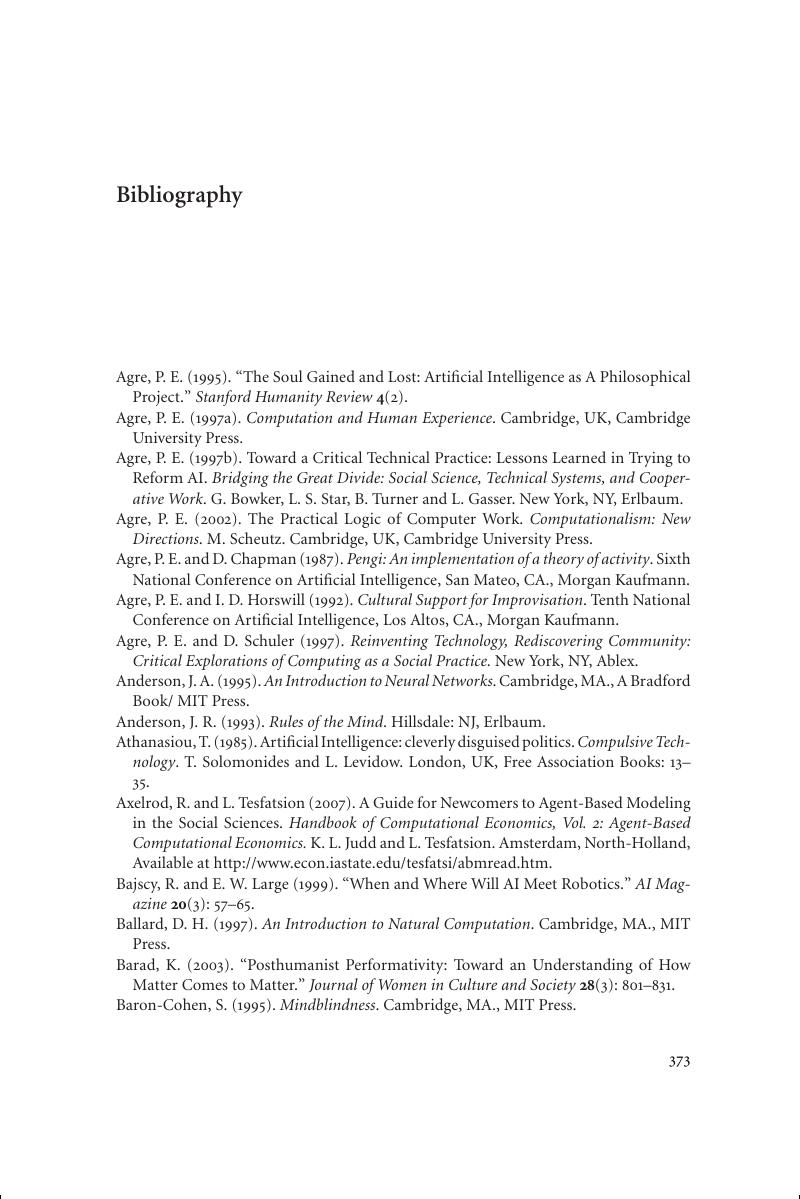Book contents
- Frontmatter
- Contents
- List of Figures and Tables
- Preface
- Prologue
- 1 GPS: The Origins of AI
- 2 Deep Blue: Supercomputing AI
- 3 Cyborgs: Cybernetic AI
- 4 Cyc: Knowledge-Intensive AI
- 5 Coach and Chef: Case-Based AI
- 6 Language Learning: Connectionist AI
- 7 Mathematical Models: Dynamical AI
- 8 Cog: Neorobotic AI
- 9 Copycat: Analogical AI
- Epilogue
- Appendix A Minimax and Alpha-Beta Pruning
- Appendix B An Introduction to Connectionism
- Appendix C The Language Acquisition Debate
- Notes
- Bibliography
- Author Index
- Subject Index
- References
Bibliography
Published online by Cambridge University Press: 05 June 2012
- Frontmatter
- Contents
- List of Figures and Tables
- Preface
- Prologue
- 1 GPS: The Origins of AI
- 2 Deep Blue: Supercomputing AI
- 3 Cyborgs: Cybernetic AI
- 4 Cyc: Knowledge-Intensive AI
- 5 Coach and Chef: Case-Based AI
- 6 Language Learning: Connectionist AI
- 7 Mathematical Models: Dynamical AI
- 8 Cog: Neorobotic AI
- 9 Copycat: Analogical AI
- Epilogue
- Appendix A Minimax and Alpha-Beta Pruning
- Appendix B An Introduction to Connectionism
- Appendix C The Language Acquisition Debate
- Notes
- Bibliography
- Author Index
- Subject Index
- References
Summary

- Type
- Chapter
- Information
- Artificial DreamsThe Quest for Non-Biological Intelligence, pp. 373 - 392Publisher: Cambridge University PressPrint publication year: 2008



